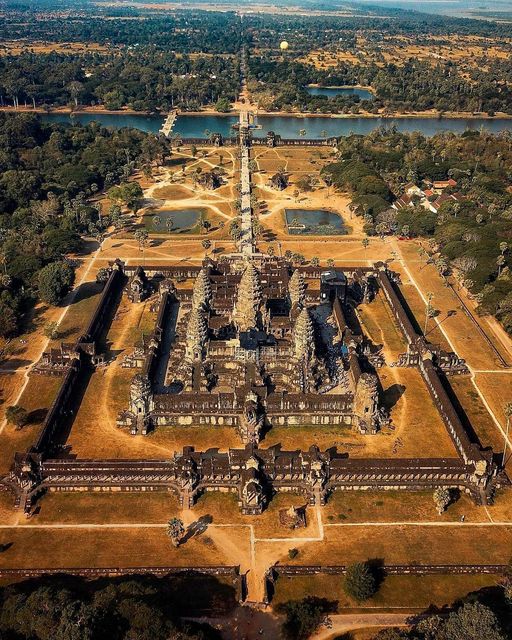Nestled within the lush landscapes of Cambodia lies a testament to the ingenuity and grandeur of ancient civilizations—the awe-inspiring temple complex of Angkor Wat. Spanning over 162.6 hectares, this architectural marvel stands as a symbol of Cambodia’s rich cultural heritage and artistic prowess. Join us as we embark on a journey to uncover the secrets of Angkor Wat, delving into its history, significance, and the mysteries that lie within its sacred walls.

The Marvels of Sandstone: Angkor Wat is renowned for its intricate sandstone architecture, with millions of blocks painstakingly carved and assembled to create this magnificent temple complex. The use of sandstone, sourced from Mount Kulen, showcases the incredible engineering feats of the Khmer Empire, which transported these massive blocks over 40 kilometers to construct Angkor Wat. Each block, weighing up to 1.5 tons, was meticulously crafted to form the intricate carvings and bas-reliefs that adorn the temple’s facades, depicting scenes from Hindu mythology and Khmer history.
A Testament to Ancient Ingenuity: The construction of Angkor Wat required unparalleled resources and manpower, with estimates suggesting that it utilized more stone than all the Egyptian pyramids combined. This monumental undertaking speaks to the wealth and power of the Khmer Empire, which flourished during the 12th century under the rule of King Suryavarman II. Originally dedicated to the Hindu god Vishnu, Angkor Wat later underwent a transformation into a Buddhist temple, reflecting the cultural and religious shifts that shaped Cambodia’s history.
Guardian of Spiritual Legacy: Angkor Wat is not merely a temple complex but a sacred sanctuary that has stood the test of time, serving as a focal point for religious devotion and spiritual contemplation. Its towering spires and intricate galleries invite visitors to explore its hallowed halls, where the echoes of ancient rituals and prayers still resonate. As the largest religious structure in the world, Angkor Wat holds a special place in the hearts of Cambodians and pilgrims from around the globe, who flock to its sacred precincts to seek solace and enlightenment.
Unearthing Ancient Treasures: As we marvel at the splendor of Angkor Wat, we are reminded of the wealth of ancient discoveries that lie hidden beneath its ancient stones. Archaeological excavations within the temple complex have unearthed a treasure trove of artifacts, including ancient inscriptions, sculptures, and relics, shedding light on the daily lives and beliefs of the Khmer people. These discoveries offer invaluable insights into Cambodia’s rich cultural heritage and provide a glimpse into the distant past, where empires rose and fell, leaving behind a legacy of art, architecture, and spiritual devotion.


